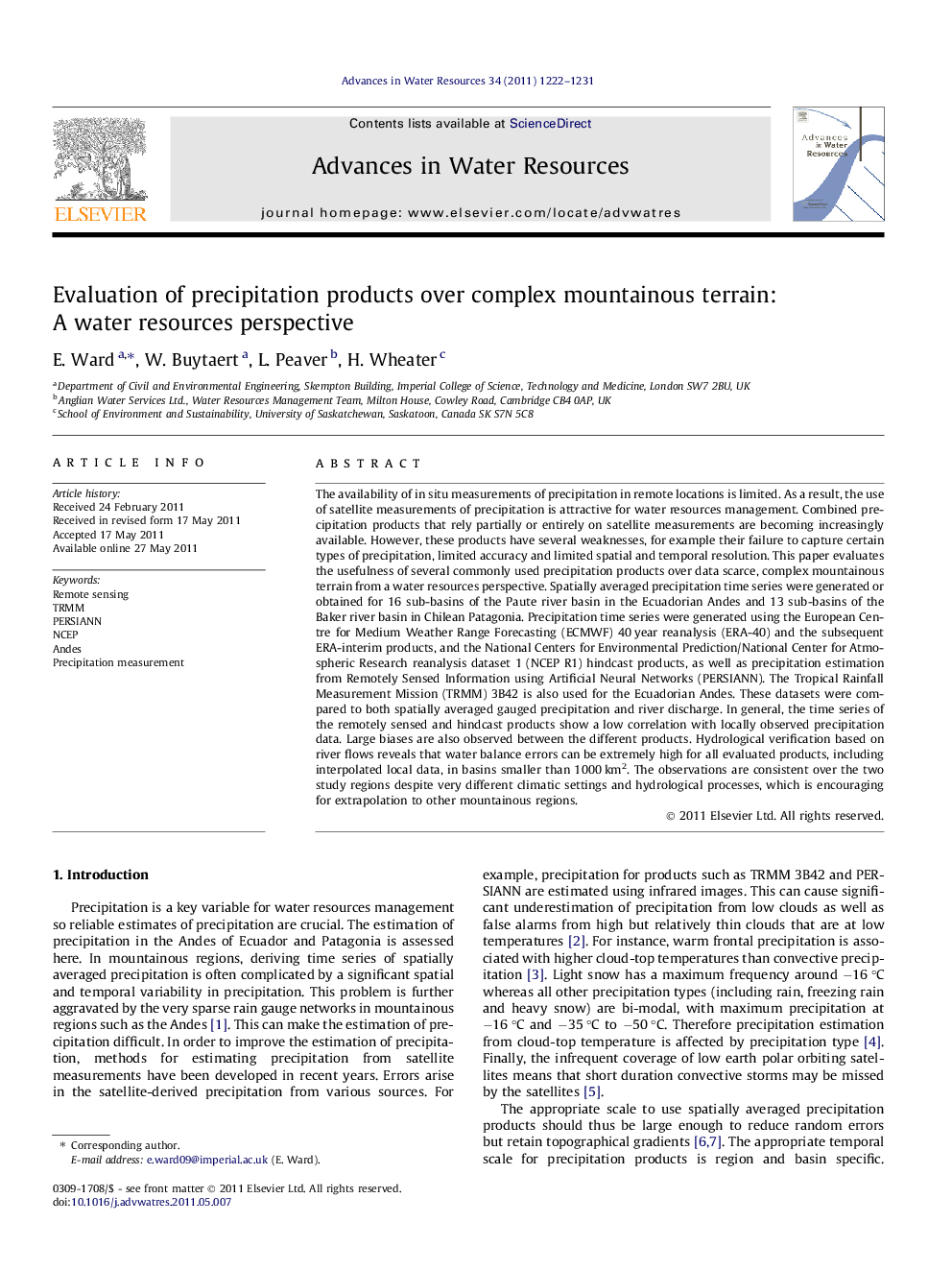| Article ID | Journal | Published Year | Pages | File Type |
|---|---|---|---|---|
| 4526039 | Advances in Water Resources | 2011 | 10 Pages |
The availability of in situ measurements of precipitation in remote locations is limited. As a result, the use of satellite measurements of precipitation is attractive for water resources management. Combined precipitation products that rely partially or entirely on satellite measurements are becoming increasingly available. However, these products have several weaknesses, for example their failure to capture certain types of precipitation, limited accuracy and limited spatial and temporal resolution. This paper evaluates the usefulness of several commonly used precipitation products over data scarce, complex mountainous terrain from a water resources perspective. Spatially averaged precipitation time series were generated or obtained for 16 sub-basins of the Paute river basin in the Ecuadorian Andes and 13 sub-basins of the Baker river basin in Chilean Patagonia. Precipitation time series were generated using the European Centre for Medium Weather Range Forecasting (ECMWF) 40 year reanalysis (ERA-40) and the subsequent ERA-interim products, and the National Centers for Environmental Prediction/National Center for Atmospheric Research reanalysis dataset 1 (NCEP R1) hindcast products, as well as precipitation estimation from Remotely Sensed Information using Artificial Neural Networks (PERSIANN). The Tropical Rainfall Measurement Mission (TRMM) 3B42 is also used for the Ecuadorian Andes. These datasets were compared to both spatially averaged gauged precipitation and river discharge. In general, the time series of the remotely sensed and hindcast products show a low correlation with locally observed precipitation data. Large biases are also observed between the different products. Hydrological verification based on river flows reveals that water balance errors can be extremely high for all evaluated products, including interpolated local data, in basins smaller than 1000 km2. The observations are consistent over the two study regions despite very different climatic settings and hydrological processes, which is encouraging for extrapolation to other mountainous regions.
► We assess the performance of rainfall products in the tropical Andes of Ecuador and Patagonia. ► We consider interpolated rain gauge (WorldClim, CRU CL2.0), reanalysis (NCEP R1, ERA-interim and ERA-40) and remote sensing (TRMM 3B42, PERSIANN) products. ► Seasonal rainfall was well represented by all products. ► Rainfall runoff ratios for sub-basins stabilized at 1000 km2. ► Low correlations exist between rain gauges and all products on a daily and monthly timestep.
